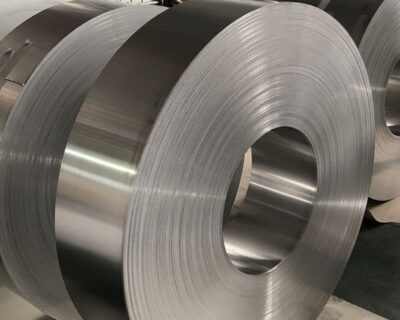Blogs

Exploring the Diverse Applications of Nickel Alloy Metals in Engineering
Introduction
Nickel alloys are celebrated for their exceptional mechanical properties and unparalleled resistance to corrosion, making them indispensable in numerous high-stress applications. These alloys exhibit impressive tensile strength, remarkable ductility, and the ability to withstand extreme temperatures, which are crucial for operations in demanding environments. Their superior resistance to oxidation and sulfidation ensures prolonged durability and reliability, particularly in sectors such as chemical processing and aerospace.
As the aerospace industry experiences a surge in demand, driven by substantial orders from major manufacturers like Boeing and Airbus, the need for high-value nickel alloys is expected to rise significantly. This trend underscores nickel’s critical role in advancing aerospace technology and material science. Additionally, nickel’s importance extends to the energy sector, particularly with the global shift towards green energy.
The utilization of nickel in electric vehicles and energy storage technologies is poised to expand, aligning with government initiatives aimed at promoting sustainable practices.
The exceptional properties of nickel alloys, coupled with their growing significance in aerospace and energy applications, position them as a cornerstone of modern engineering and technological advancements. As industries continue to evolve and prioritize both performance and sustainability, nickel alloys will undoubtedly play a pivotal role in shaping the future of engineering solutions.
Properties of Nickel Alloys
‘Nickel mixtures are renowned for their superior mechanical properties and outstanding resistance to corrosion, making them indispensable in various high-stress applications.’. These metal mixtures boast impressive tensile strength, remarkable ductility, and the capacity to endure extreme temperatures. ‘The incorporation of this metal significantly improves the material’s overall toughness and stability, which is crucial for operations in harsh environments.’.
A significant benefit of these metal mixtures is their remarkable ability to withstand oxidation and sulfidation, guaranteeing extended longevity and dependability in challenging industries like chemical processing and aerospace. As the aerospace sector encounters an increase in need, fueled by significant requests from leading producers such as Boeing and Airbus, the requirement for high-value metal alloys is anticipated to grow. This increased demand highlights the essential function of this metal in advancing aerospace technology while pushing the boundaries of material science.
Furthermore, the significance of this metal reaches the power industry, especially in relation to the worldwide shift towards renewable resources. Its application in electric vehicles and power storage technologies is set to grow, aligning with government initiatives aimed at promoting sustainable practices. As per industry specialists, the need for this metal might rise by around 65% by the conclusion of the decade, emphasizing its crucial function in the future of sustainable power solutions.
In summary, the remarkable characteristics of these metal mixtures, coupled with their increasing importance in aerospace and energy applications, make them a cornerstone of contemporary engineering and technological progress.

Applications of Nickel Alloys in Engineering
Nickel mixtures are indispensable in engineering applications due to their versatility and reliability. They play a crucial role in manufacturing components for gas turbines, heat exchangers, and pressure vessels. The automotive sector utilizes metal mixtures in exhaust systems and fuel lines, gaining advantages from their resistance to high temperatures and corrosion. Furthermore, these materials are essential for marine equipment and offshore platforms, which face harsh environmental conditions.
In the larger framework of power sources and sustainability, the significance of this metal is increasing. It is a key element in power storage technologies, including lithium-ion batteries utilized in electric vehicles (EVs). The International Energy Agency forecasts a 65% rise in the need for this metal by the end of the decade, propelled by the swift expansion of clean energy technology. At present, this metal is essential for high-performance alloys in wind turbines and solar panels, as well as for catalysts in green hydrogen production.
The aerospace sector’s rebound has heightened the need for the metal, as both Boeing and Airbus have secured substantial new contracts, driving prices higher. This heightened demand may stress supply networks, impacting other sectors that depend on certain metals, such as sustainable power infrastructure. Authorities, especially in the United States, are highlighting eco-friendly projects, which further increase the demand for nickel-based mixtures.
In general, these metal combinations are not only crucial in conventional engineering and automotive sectors but also in promoting the worldwide energy shift, highlighting their growing significance in contemporary industry.

Industry-Specific Uses of Nickel Alloys
Nickel mixtures are integral to various industries due to their unique properties. In aerospace, nickel-based superalloys are critical for turbine engines, ensuring performance and safety at high altitudes. This demand is driven by the substantial orders for jet airplanes from Boeing and Airbus, which cause metal prices to rise. The oil and gas industry depends on these materials in drilling tools and pipelines to endure extreme pressures, avoiding operational failures. Moreover, the electronics sector employs metal mixtures in connectors and circuit boards, improving durability and functionality. The increasing difference between nickel raw material prices and processed nickel mixtures emphasizes their rising significance in energy applications, including green energy projects and electric vehicles. This trend is likely to continue as global recovery in aerospace drives higher demand for these essential materials.

Advantages of Nickel Alloys in Engineering
Nickel mixtures provide numerous benefits in engineering because of their exceptional characteristics. Their high resistance to corrosion and oxidation extends the lifespan of components, significantly reducing maintenance costs. This durability is particularly crucial in industries like aerospace and energy, where reliability and longevity are paramount. ‘The aerospace industry’s rebound has resulted in a rise in demand for metal mixtures, spurred by the necessity for materials that can endure extreme conditions.’. Boeing and Airbus’s significant new requests for jet aircraft emphasize this trend, with metal mixtures playing a crucial role due to their exceptional mechanical characteristics.
Moreover, these alloys perform exceptionally well under extreme temperatures and pressures, making them ideal for critical applications where failure is not an option. This ability is essential for the aerospace sector, which depends on materials that can withstand the rigorous requirements of flight and space exploration. Governments globally, including the United States, are also advocating for more green energy initiatives, further increasing the demand for this metal in applications such as electric vehicles and renewable energy infrastructure.
Personalization is another important benefit of these metal mixtures. Engineers can tailor these materials to meet specific requirements, optimizing performance for particular applications. This flexibility enhances efficiency and reliability across various industries. For example, the group at M4 Engineering focuses on creating and enhancing high-performance systems, using advanced metal mixtures for electric aircraft, eVTOL, and urban air mobility solutions. Their work highlights the essential function of metal mixtures in tackling intricate engineering problems associated with weight forecasting, rotor dynamics, and vehicle enhancement.
In summary, the multifaceted advantages of these metal combinations, including their resistance to corrosion, high strength, and adaptability, make them essential in contemporary engineering. As the need keeps increasing, especially in the aerospace and energy fields, the tactical application of nickel-based materials will be crucial in fulfilling the changing requirements of these sectors.

Key Industries Utilizing Nickel Alloys
Numerous essential sectors significantly depend on specific alloys due to their distinctive characteristics. The aerospace industry is a significant user, employing these materials in engines and structural components. The worldwide aerospace sector’s revival has boosted the need for a crucial aircraft element because of its resistance to corrosion and high durability. Both Boeing and Airbus have received substantial new orders for jet airplanes, further driving this demand. The petrochemical sector also employs metal mixtures for their capacity to endure corrosive materials. Furthermore, the power generation industry gains from certain metal alloys in turbines and other high-temperature uses, ensuring safe and efficient power production. Moreover, the shift towards sustainability has driven the utilization of a specific metal in renewable technologies. Nickel is essential in the cathodes of lithium-ion batteries for electric vehicles (EVs), wind turbines, and solar panels. As restrictions on internal combustion engine vehicles near in numerous markets, the need for this metal in electric vehicle batteries could rise from 4% to as high as 40% by 2030. Nickel’s role in power storage technologies has been pivotal in improving storage capacity at low cost, miniaturizing batteries, and enabling portable electronic devices. The International Energy Agency (IEA) predicts a 65% increase in nickel demand by the end of the decade, driven by the burgeoning need for clean energy applications, including catalysts for green hydrogen production.

Conclusion
Nickel alloys stand out as essential materials across various high-stress applications due to their remarkable mechanical properties and resistance to corrosion. Their impressive tensile strength, ductility, and ability to endure extreme temperatures make them crucial in sectors such as aerospace and energy. The increasing demand for nickel alloys, particularly driven by significant orders from major aerospace manufacturers, underscores their pivotal role in advancing technology and material science.
In engineering applications, nickel alloys demonstrate versatility and reliability, finding use in components ranging from gas turbines to energy storage systems. Their importance is further amplified in the context of the global transition to green energy, where nickel is integral to electric vehicle batteries and renewable energy technologies. The anticipated growth in demand highlights the necessity for strategic procurement and utilization of these alloys to meet industry needs effectively.
As various industries continue to evolve, the advantages offered by nickel alloys—such as customization, corrosion resistance, and high strength—position them as indispensable elements in modern engineering solutions. The ongoing focus on sustainability and performance ensures that nickel alloys will remain at the forefront of technological advancements, shaping the future of critical applications in aerospace, energy, and beyond.




